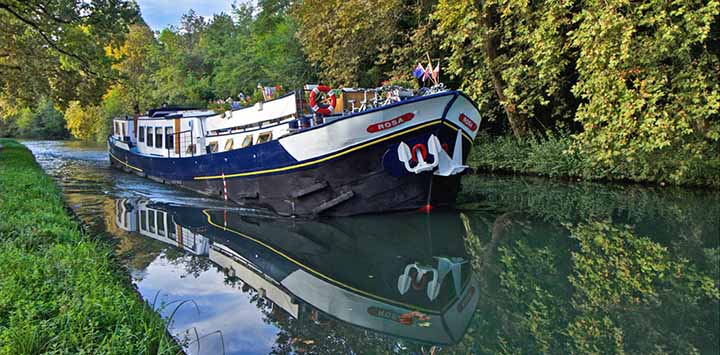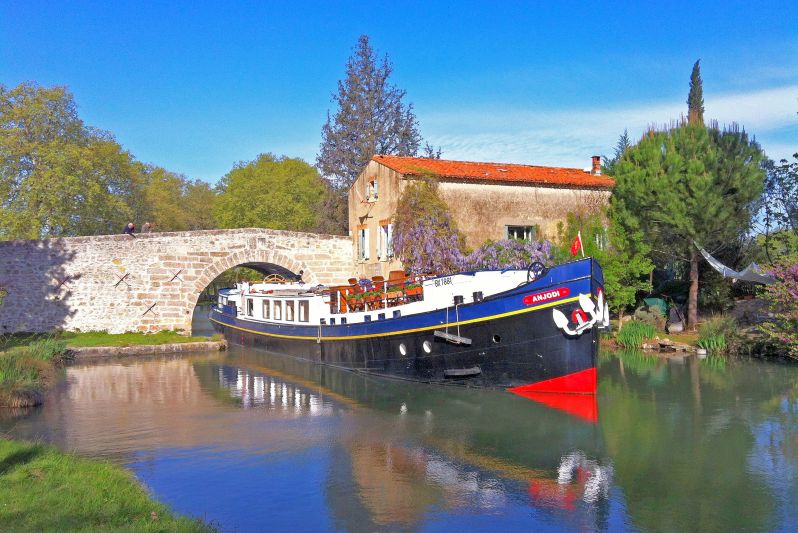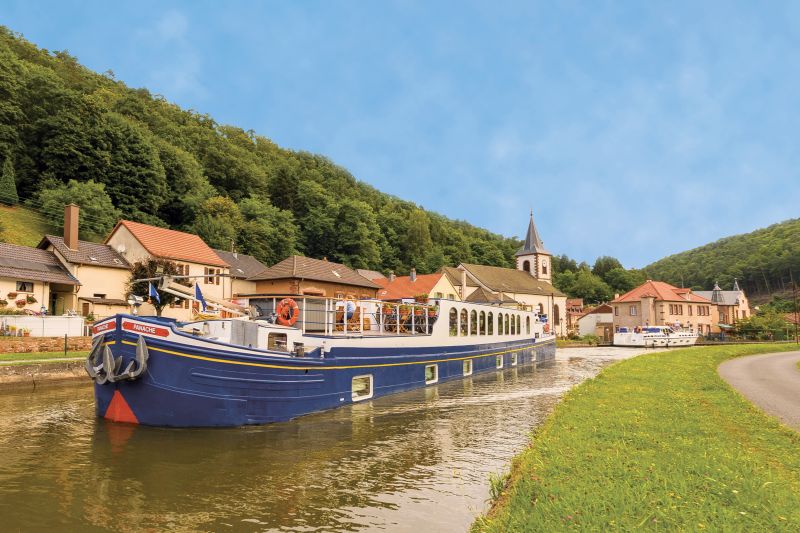For a newcomer to luxury barge holidays, all barges may look alike. But did you know, there are numerous types of barge vessels with distinct differences in their histories as well as designs? These models evolved over 200 years, adapting to changing conditions and technology. In Europe, canals – the home of barges – link the English Channel, the Atlantic Ocean and the Mediterranean Sea. Here is a brief overview of the most common types of barge you might come across on your waterway vacation…
Types of Barge: Know Your Spitzen From Your Klippers

Tjalks and Klippers
The tradition of this barge can be traced back to the seventeenth century. Originally wind-powered Tjalks were built out of wood; in the nineteenth century, boat builders began to consider the possibilities of iron and in the twentieth century steel’s properties were harnessed by the industry. Therefore, modern versions of the Tjalk are built from iron or steel, but retain the curved stern of the wooden original.
Designed for the fast-flowing estuaries and rivers of Holland, the robust Klipper has always been constructed from iron or steel. The use of steel leads to a stronger vessel, though this introduces the danger of corrosion. The Klipper rudder sits below a rounded stern and is steered by wheel.

The Beurtmotor and the Luxemotor
The Beurtmotor was used for both passengers and cargo and often travelled to a reliable timetable, replacing steam-powered river ships. It became even more popular with the introduction of the diesel engine as their scheduling was more consistent than ever. Like all other barges, the Beurtmotor types of barges were constructed to navigate shallow waters – anywhere between 3 and around 10 feet of water. However, this was not a limitation, as most inland waterways in western Europe conformed to these requirements.
The trailblazing Luxemotor was built at the beginning of the twentieth century and was the first barge to have its own engine. Riding on the success of the Beurtmotor, they were quite luxurious with plenty of room – including a kitchen and a toilet – as well as a pointed bow ideal for more exposed waters.

The Spitz
The Spitz has a long and varied history. These types of barges were built to the Freycinet standard imposed by Napoleon during a time of standardisation, and the vessel was first towed by hand (or horse). However, after the Second World War many of the Belgian Spitz vessels were kitted out with engines – often decommissioned tank engines. With a few adjustments at the stern to improve steering, this motorized version of the Spitz was designed for the canals of France, Belgium and the Netherlands.

European Waterways Luxury Barge Cruises
You’ll find various types of barges in the European Waterways fleet, including barges with a wealth of history behind them. A barge vacation suits both the history lover and the cruise enthusiast. For example, L’Art de Vivre – the oldest of the fleet – is an English model and was built in the First World War to supply allied troops in the Somme. The beautiful Rosa is a Dutch Klipper that carried various cargos in early twentieth-century Holland. Both are now enjoying retirement cruising the gorgeous waterways of France, lovingly restored in a way which celebrates their fascinating heritage.
 English
English
 Spanish
Spanish French
French German
German Norwegian
Norwegian Portuguese
Portuguese Swedish
Swedish Italian
Italian Russian
Russian Simplified Chinese
Simplified Chinese Japanese
Japanese